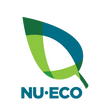How wastewater is poisoning our rivers and six steps you can take to help
South Africa’s most at-risk biome is our Grassland Region, which spreads across Kwazulu-Natal and the Eastern Cape. It is home to 40% of our country’s people, almost 50% of our endemic mammals, and our Biochem business. Hence, we have focused our article on this area specifically. Understanding the problems between the river, wastewater, our communities, and us at home is difficult as they are layered. Still, it is the first step towards a solution, and there are ways to make a difference.
Listed below are two key issues contributing to the health and safety of our community, river systems, and wildlife and six steps we can take right now to combat them.
2 KEY THREATS TO THE GRASSLAND REGION THROUGH OUR WATERCOURSES
- UNTREATED EFFLUENT FROM ANIMAL AGRICULTURE
Livestock farming is a major consumer of fresh water. The volume required in our Grassland region is significant as the area produces 60% of commercial crops, 44% of cattle, and 32% of sheep for our country. Beyond consumption is the issue of untreated effluent from feedlots and abattoir waste contributing to the hypoxic state of the rivers, with pathogens, hormones, pharmaceuticals, and other nutrients leaching into them.
Two steps you can take to help:
- Find out who the high-intensity livestock farmers and abattoirs are in your area. Question how they treat their waste and have an open discussion on new solutions available to them.
- Consume less of what this industry produces and be selective about who you buy from. Do not be “greenwashed” by what is written on the packaging. Find out if the farm treats its waste.
- WASTE- SEWAGE AND MORE
Our 2022 South African Green Drop Report outlines the further regression of our wastewater systems since 2013. While there are many to blame, the reality is our systems are in trouble, and people are getting sick. At Biochem, we feel a sense of urgency to do what we can and to inspire our customers to do what they can from home.
Three steps you can take to help:
- If you have anyone in your life who relies on a river, our Dutrion Water Purification Tablets will purify water for consumption.
- For those with outdoor pit toilets, these are essentially small septic systems and, if appropriately treated, are the most eco-friendly option as everything is dealt with onsite. At Biochem, we manufacture a range of safe pit toilet products. Combined with these products, the habit of flushing only toilet paper and effluent should be adopted for a well-functioning and long-lasting system.
- A clean river starts at home. Take note of what you pour down your drains and toilets, whether you have a septic system or rely on the municipality. Use natural and biodegradable cleaning products that break down before hitting a watercourse. Treat your septic system like a child or plant: water it (don’t let it get dry), feed it (with our Septic powder).
- Check whether your favourite local restaurant treats and manages their fat traps appropriately. If not, your local waterworks will be burdened by the discharge from their kitchens. Get everyone around you thinking and working together to do better!
As the wheel of the river, people, and wildlife continues to grind and spark, we look to what we can do now in our homes. Setting the reality of our political misfortunes aside, let’s decide what can be done right now by us as consumers of our rivers and the biome we live in, both of which are drowning under the weight of our human requirements. Please reach out to our Biochem team, experts in treating various waste streams with our natural solutions. sales@biochemproducts.co.za
*sources
GD22 Report_NATIONAL_FINAL_16May22_MN web.pdf (dws.gov.za)
Home Page - Limpopo River Awareness Kit
About the Grassland and Wetland Habitats – KZN Crane Foundation
